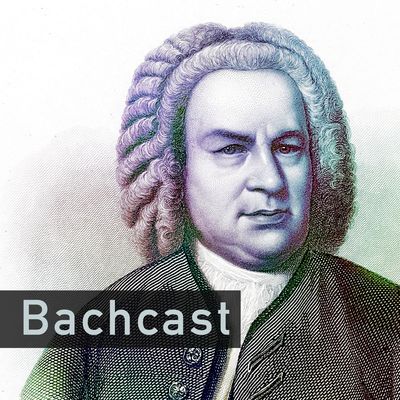Discover outstanding recordings of Bach's music and some of the interesting details in Bach's works. Each episode is dedicate to one work by J.S. Bach.
http://www.biberfan.org/bachcast/
Bachcast Episode 14: BWV 227
Show Notes
- Score, BWV 227
- Notes on form and history from the Wikipedia
- English translation of text of BWV 227
- Discussions on BWV 227 performances via Bach Cantatas Website
- Video Performance by Vocalconsort Berlin
- Philippe Herreweghe’s Recent Recording of the Bach Motets - Amazon.com
- Philippe Herreweghe’s 1985 Recording of the Bach Motets - Amazon.com
- Bach Collegium Japan’s 2010 Recording of the Bach Motets - Amazon.com
- Hilliard Ensemble 2007 Recording of the Bach Motets - Amazon.com
Bach’s motets, if you will remember from an earlier episode, are vocal works we believe were intended for funeral services. As Bach never likely thought of them as a “set,” they take on different flavors, so each one can be looked at with unique perspective. Of all the motets, this one is my favorite. The scoring suggests an intimate setting, and the writing here makes hearing the 4 or 5 parts distinctly very easy. What we need to remember is that tradition held that Bach would need to establish his compositions within a tradition, and for this one, he borrowed both the text and chorale melody from an earlier generation. Within the musical world he lived, these pieces would have been viewed, with or without the link to the past, as old fashioned. Yet, it is easy for us to overlook that because of the great artistry applied to the composition, which had a very pragmatic use for this music to mark the passing of another human being.
This was written for 18 July 1723 for Johanna Maria Käsin, wife of the postmaster in Leipzig. It is the longest of Bach’s funeral motets, with 11 movements. The chorale melody is taken from Johann Crüger, from the mid-17th century. The German text was written by Johann Franck and too dates from the mid-17th century. In terms of form, it has been described as a 7-section work, quite symmetrical in form. The center of this form is a double fugue, based on the Biblical text from Romans 8:9; and appears as the 6th movement, Ihr aber seid nicht fleischlich.
PerformanceLooking at the score, this is written possibly for a small ensemble of four singers; except that after the opening movement, the soprano line opens into two parts, revealing a 5-part scoring. I’m led to believe that Bach’s design of this work into 7 sections from an architect’s view was very deliberate on his part, but that the choice for scoring in 5 voices was likely more a pragmatic decision, having the availability of singers for that texture. Bach limits the texture in several numbers to a trio, featuring two sopranos and alto, and then again, with alto, tenor, and bass. The chorales, as we might expect, which are the less rhythmically and less virtuosic numbers, are always presented in a traditional four parts.
Without additional context, there is actually a lot left to try and understand about how it was performed in context, and what changes Bach may have approved of for re-performance, without the context. At first glance, the split for me of the soprano parts into 2 suggests that the performance may have been given by a larger choir, say, with 4 voices per part, with an overall ensemble of 16-20 performers. But where was it performed? And did the music have an instrumental accompaniment?
If we picture this piece being performed outside, at the time of burial, the use of an organ, or string instruments doubling the voices seems an impossibility. And as far as the numbers involved, how long did they have to prepare for the performance? How fast did Bach write the piece? And in the more virtuosic passages, could the entire larger chorus perform it well, or were the pieces with smaller textures led by soloists, with the full choir only participating in the chorales? Or was there really a large choir? Or just 5 soloists?
While I love the transparency of a single voice per part texture, there is something to be said of the more intense portions of the text, that do gain value from a larger choir of singers. The recording linked above from the Vocalconsort of Berlin demonstrates this well. Of doubt, for me, is the need for organ and violone to double the bass part.
Musicologists can today hash out the details to those types of questions, what we’re left with in the recording space is a number of different solutions. My job today is to reveal what I think is the better of the recordings out there.
The highlight of the work for me is the Gute Nacht section. For this episode, I feature the recording from 2007 by the Hilliard Ensemble.
